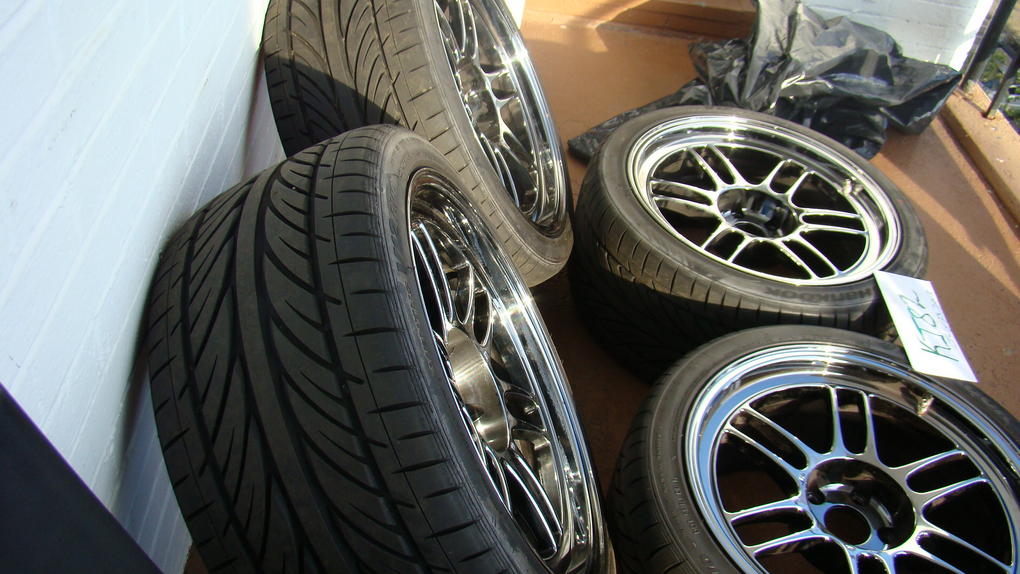There are free tools that help you do math regarding offset and width:
https://www.1010tires.com/Tools/Wheel-Offset-Calculator
Just input the width/offset of the current wheels and whatever size you'll considering and the calculator tells you how it will set relative to your current size
Now, let's talk about tire size
Tire size involves width, aspect ratio, and diameter, expressed normally like this:
315/25/20
315 is the width in MM
25 is the aspect ratio in PERCENTAGE of the width
20 is the diameter in INCHES
Don't ask me why there's different units or why they use a ratio, some clown decided thats the format and thts what we got.
Width and diameter are self explanatory. Aspect ratio is how "thick" the tire is vertically; think of it as how fat a donut is. The confusing part is that it is measured as a percentage of the width, so in a 315/25/20 tire, the aspect ratio of 25 means the the tire thickness is 25% of 315. It's stupid. i know
All that really matters is that this affects how tall the tire is. Fortunately there is again a free tool that does the math for you:
https://tiresize.com/height-calculator/
This tells us that a 315/25/20 tire is 26.2 inches tall
Why is this relevant? Because your front and rear tires need to be about 3% of each other (i think) for your speed sensor to work; going too far will trip warning lights.
A secondary reason is gearing. A taller tire will physically take more power to spin; this is generally bad; conversely, bigger wheels will in theory change your top speed.
The third reason is probably the most relevant to most people - how tall a tire is affects how it looks and how it fits in the wheel well.
The stock tire wheel diameter for a Nismo is 26.7 inches in front, 26.9 inches rear. Going bigger than that will visually fill out the wheel well, but depending on the height of the tire and stance, you aren't going to look better that way. It lends a 4x4 monster truck appearance. Going too small will create a gap, which is also bad. You generally should stay roughly close to the stock height of the tire
Stock wheels are 18 (base) or 19 (sport/nismo) They maintain the same height despite different diameters by changing the height of the tire. Again, use the tire height calculator to do the work for you if you're switching between 18/19/20
Next, we should examine the concept of "stretched" tires. Ignorant folks will recoil at the idea because they were raised in a different car culture. It is not a bad thing by itself, but like all things, too much can be dangerous.
Every tire manufacturer recommends a specific wheel width (or range of width) for a specific tire size. For example:
https://www.toyotires.com/tire/patte...res-proxes-r1r
Scroll down to say, 265/35/18 on this Toyo R1R. They recommend between a 9 or 10.t inch width wheel for this size, with a 9.5 width as their "ideal." Every manufacture, despite adhering to the same tire size format we discussed above, has slight differences in how their tire fits a wheel; there's nothing you can do about it, it's just the process.
Stretching a tire means putting a tire that is narrower than the "normal" width for a particular width tire.
For that same 18x9.5 wheel described above, a tire that is less than 265/35/18, would be considered by many people, a "stretched" tire. Putting a 225/45/18, for example, is much more narrow a tire than is normal for that width wheel and would be "stretched" tire sizing.
Why do people do that? To create more room for a tire to clear the fender. Example, 265/35/18 on an 18x9.5 wheel:

This would be considered a normal or "square" tire fitment.
Now look at at 225/45/18 on the same 18x9.5 size wheel

Look at the difference in how the tire size on the wheel. The additional space created by now the tire shoulder angles inward is space needed to fit under a fender.